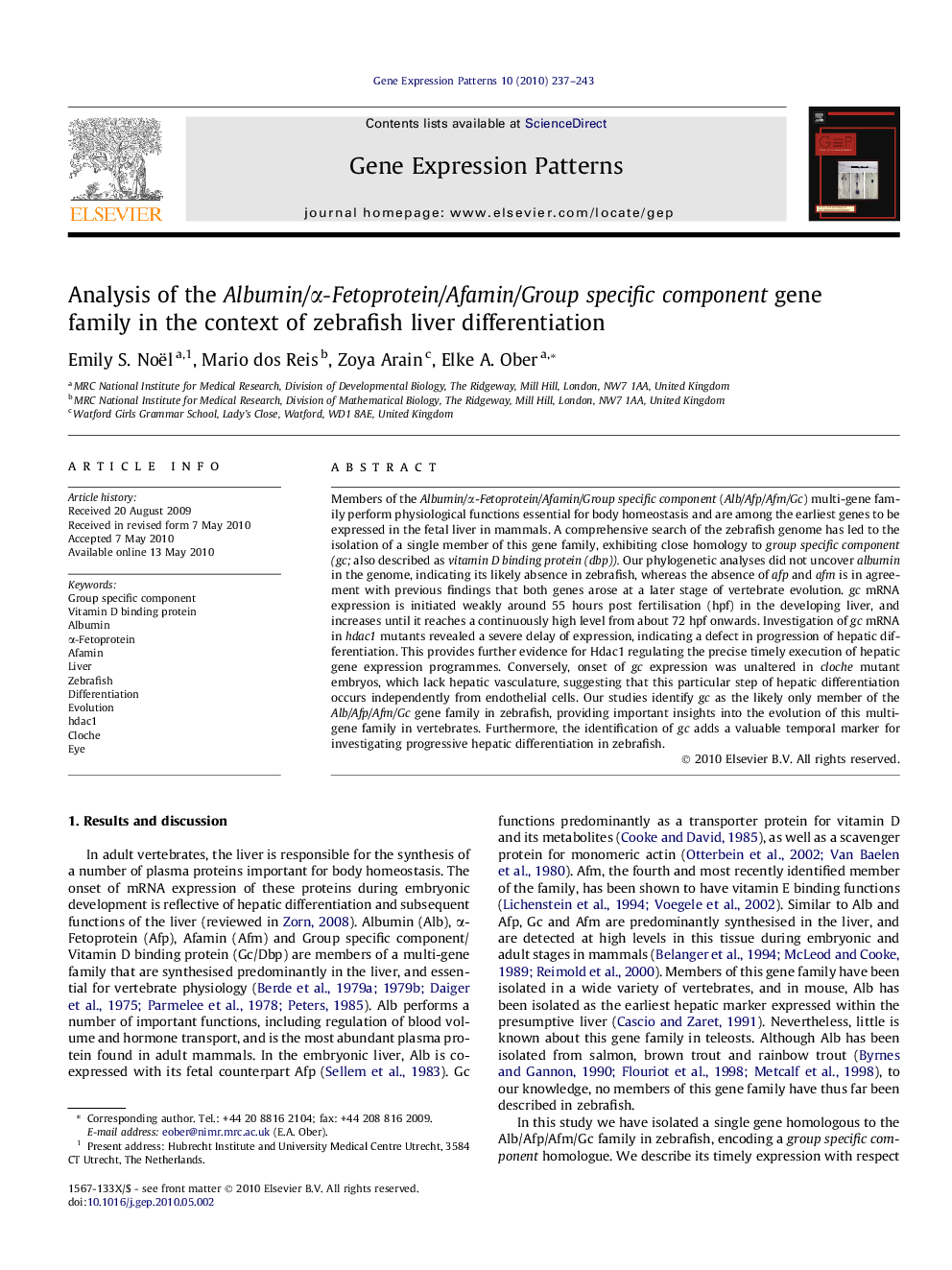| Article ID | Journal | Published Year | Pages | File Type |
|---|---|---|---|---|
| 2182071 | Gene Expression Patterns | 2010 | 7 Pages |
Members of the Albumin/α-Fetoprotein/Afamin/Group specific component (Alb/Afp/Afm/Gc) multi-gene family perform physiological functions essential for body homeostasis and are among the earliest genes to be expressed in the fetal liver in mammals. A comprehensive search of the zebrafish genome has led to the isolation of a single member of this gene family, exhibiting close homology to group specific component (gc; also described as vitamin D binding protein (dbp)). Our phylogenetic analyses did not uncover albumin in the genome, indicating its likely absence in zebrafish, whereas the absence of afp and afm is in agreement with previous findings that both genes arose at a later stage of vertebrate evolution. gc mRNA expression is initiated weakly around 55 hours post fertilisation (hpf) in the developing liver, and increases until it reaches a continuously high level from about 72 hpf onwards. Investigation of gc mRNA in hdac1 mutants revealed a severe delay of expression, indicating a defect in progression of hepatic differentiation. This provides further evidence for Hdac1 regulating the precise timely execution of hepatic gene expression programmes. Conversely, onset of gc expression was unaltered in cloche mutant embryos, which lack hepatic vasculature, suggesting that this particular step of hepatic differentiation occurs independently from endothelial cells. Our studies identify gc as the likely only member of the Alb/Afp/Afm/Gc gene family in zebrafish, providing important insights into the evolution of this multi-gene family in vertebrates. Furthermore, the identification of gc adds a valuable temporal marker for investigating progressive hepatic differentiation in zebrafish.
